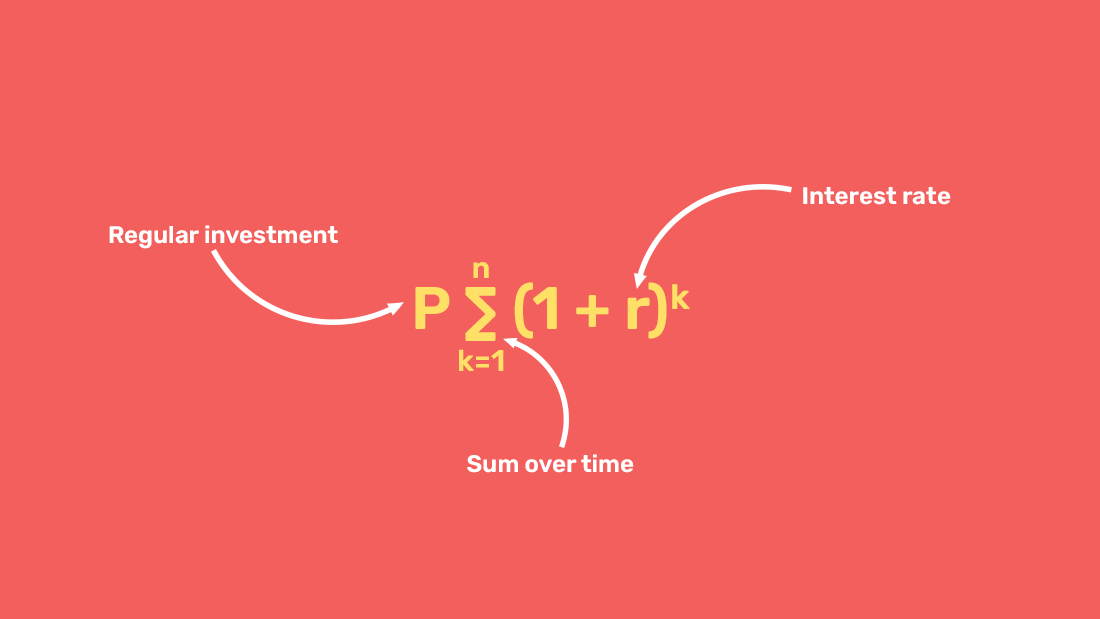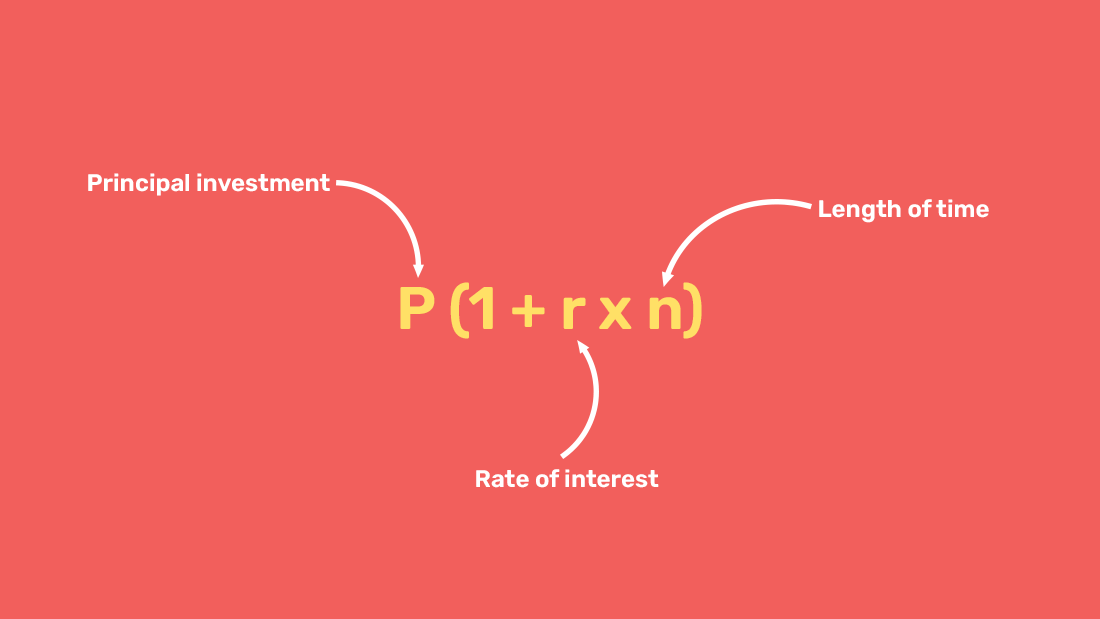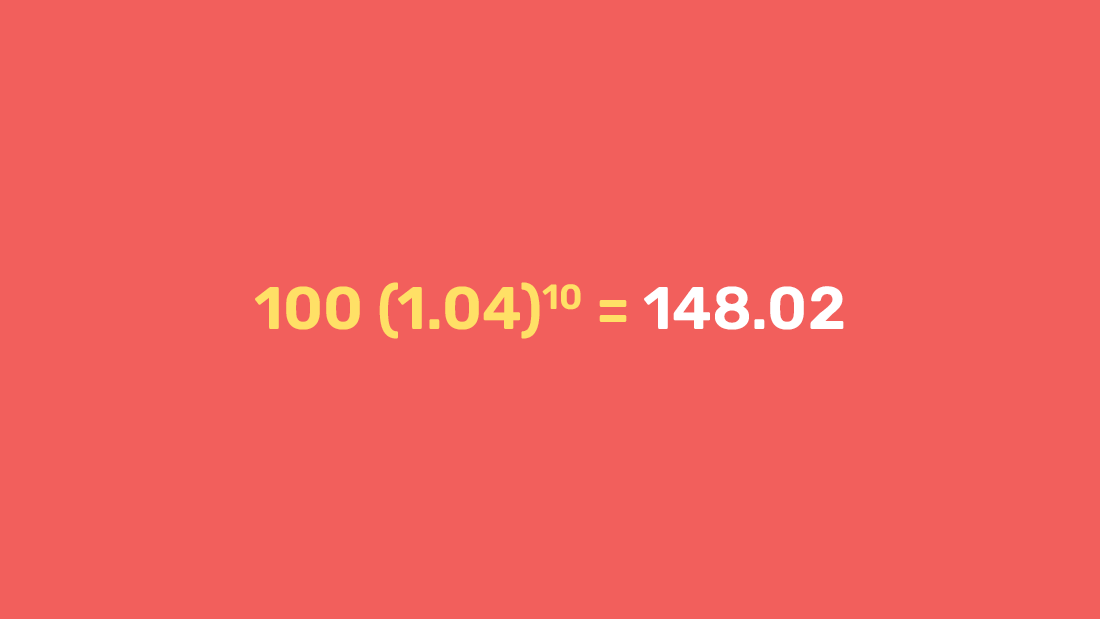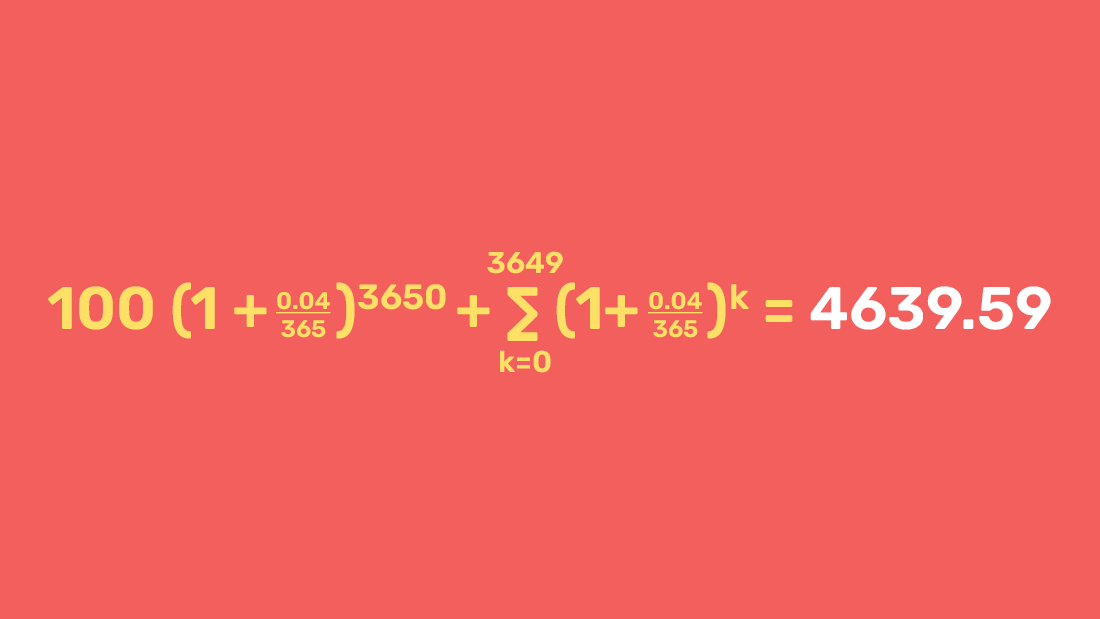According to the latest figures, there are more than 5.5 million people in the US who have more than a million dollars to hand. That sounds like a big number, until you realize it equates to about 1.65 percent of the population – or to put it another way, fewer than one in every 60 people.
Meanwhile, something like 12 times as many people are sitting here with zero emergency savings to their name. Two thirds would struggle to pay for a single month of unexpected joblessness.
Hardly surprising, then, that more than half of Americans want more savings to their name than they have. But saving a million dollars? That’s basically impossible for most of us. Right?
Well, actually, it can be easier than you may think.
What is compound interest?
There’s a reason we as a society moved away from storing our money in caches under the floorboards and towards storing it in banks: the interest. Interest, if you didn’t know, is basically a fee paid by a borrower – in this case, the bank, who uses your money to make various investments and loans elsewhere – to a lender – you. It’s the price, if you like, of borrowing money.
There are two types of interest: simple, and compound. The first, as the name suggests, is pretty straightforward – it’s basically, “lend me $100 now, and I’ll give you $10 back on top for every year I keep it.” Three years later, and you owe $130.
But the other kind – compound interest – is much more fun. And if you know how to harness it, it can snowball into millions.
No, seriously – and for proof, look no further than Benjamin Franklin. He bequeathed £1,000 in his will each to the cities of Philadelphia and Boston, directing that it should be used to fund loans at five percent interest for 100 years. At this point, 75 percent of the principal should be taken out and used to fund public works, while the rest remained invested for another century. Thanks to the power of compound interest, after the 200 years were up, that initial two grand was worth some $6.5 million altogether – not bad for a one-time deposit.
So how does it work? Well, compound interest is, put simply, interest on interest. To use the example from before, it’s like saying “lend me $100 now, and I’ll give you 10 percent on whatever I owe you for every year I keep it.” This time, at the end of year one, you owe $110; at the end of year two, you owe $121 – because ten percent of 110 is 11; and at the end of year three, you owe $132.10.
It may not be by much in this example, but as you can see, compound interest offers a better reward than simple. In fact, it’s exponentially better – a term that we’re using literally, here, since the equation for simple interest looks like this:

Image Credit: IFLScience
And the equation for compound interest looks like this:

Image Credit: IFLScience
Both of these expressions grow without limit as time goes on – but with compound interest, it grows much quicker. Case in point: that $100 borrowed with 10 percent simple interest? After 100 years, it’ll be worth $1,100.
With 10 percent compound interest, it’ll be worth $1.4 million.
How to work out compound interest
We’ve already seen the simple equation for compound interest: you take your initial investment and multiply it by one plus the interest rate all to the power of the length of time it’s invested.
So, say you deposit $100 into a savings account that offers four percent interest. After 10 years, you should expect to have:

Image Credit: IFLScience
Or should you? In fact, with most accounts, interest isn’t calculated at the end of each year, but daily – or, less often, monthly or quarterly. That makes a little bit of a difference in your favor:

Image Credit: IFLScience
Now, you may have noticed that we’ve been dealing with some pretty unrealistic scenarios so far. For example, if you’re opening a savings account, it’s unlikely that you intend to deposit $100 and then forget about it for a century. So how does the situation change if you save regularly?
It actually makes a pretty big difference. Math-wise, a little jiggery-pokery reveals the formula we’re dealing with:

Image Credit: IFLScience
And because these things are always easier to understand with an example, let’s say you deposit $100 into that four percent interest account, compounded daily, and you continue to deposit another $1 every month. In that case, after 10 years, you should expect to have:

Image Credit: IFLScience
It’s not that much to squirrel away each month – heck, it’s the kind of amount you could find in spare change down the back of the sofa – but as you can see, it adds up. And it’s this effect that is behind all those websites promising that by saving some seemingly trifling amount each day, you could make a million – but just how accurate are those claims?
How to become a millionaire on five bucks a day
So, let’s say you’re 25 years old, and you want to have a million dollars saved by age 65. How much do you need to put away to reach your goal?
Well, it depends on who you ask. According to the Motley Fool, you need to save $6.19 every day. Financial adviser David Bach is more optimistic: in his book Smart Couples Finish Rich he reckoned you’d only need a daily saving of $3.57 to get the same result. Bankrate’s calculator suggests a daily saving of around $13.29 to make a million by age 65, while CNBC puts the necessary amount at around $8 per day with certain investments “aggressive investments”.
So what’s the right figure – and why is there such a wide range of answers?
In fact, a big part of the discrepancy between the suggested savings amounts will come down to the interest rate. Motley Fool assumes a 10 percent average annual return, while Bach was working with a slightly higher – and, frankly, a little optimistic – 12 percent. Bankrate’s figure is the highest because it assumes the lowest interest rate, seven percent; CNBC was assuming nine.
If they all sound very high to you, don’t worry: for investments, they’re actually not that unrealistic. While savings accounts generally offer much lower rates, stock market returns have averaged at just under 10 percent between 1992 and 2021 – just over 7 percent if you account for inflation. Now, of course, the returns on stock investments can and do fluctuate wildly, both up and down, so those figures are only good as a long-term indicator – but since we’re talking about a 40-year span here, we can let it slide.
Okay, so let’s take 10 percent as our interest rate. Now, using our formula from before, we can reverse-engineer the amount needed every day to reach a million in 40 years.
The answer: about $5.33 per day – more than Bach suggested, but less than the other estimates. Indeed, slotting those figures into the SEC’s compound interest calculator does reveal that stashing $5.33 per day – with interest compounded monthly or daily – should net you more than a million over 40 years. Result!
So what were those other figures about?
It’s a fair question: if the math works out like that, then what’s with all the other answers out there? Well, there are a few things we’ve assumed in our calculations that are worth noting.
First of all, it bears repeating: the stock market is a gamble. For our calculations, we assumed a 10 percent return every year – that simply is not realistic. And we’re not talking like, one year it might be nine percent, the next 11; in the decade between 2012 and 2021, the stock market spent eight years generating returns of more than 12 percent, with two of those – 2013 and 2019 – generating returns of more than 30 percent. That’s a far cry from the average, and that kind of effect will change the amount of interest you receive.
Secondly, we’ve assumed daily compounding – not a given. And of course, there are things like taxes and inflation to take into account. We’ve assumed none of that, but unfortunately, they’re famously unavoidable.
So, how much should you save to become a millionaire by retirement? Perhaps not as much as you thought – but possibly more than you hoped. Oh – and of course, if you’re older than 25, you’ll want to up the amount you’re saving considerably: if you’re 35, you’ll need to stash away about $14.36 a day to compound a million by retirement; if you’re 45, that jumps up to a fairly whopping $42.87.
The key, therefore, is saving early – but not necessarily saving a lot. And – like Benjamin Franklin – trusting in the math.
Source Link: How To Make A Million Dollars (With Math!!)